Central Thailand Travel Guide – 7 Splendid Trip Ideas
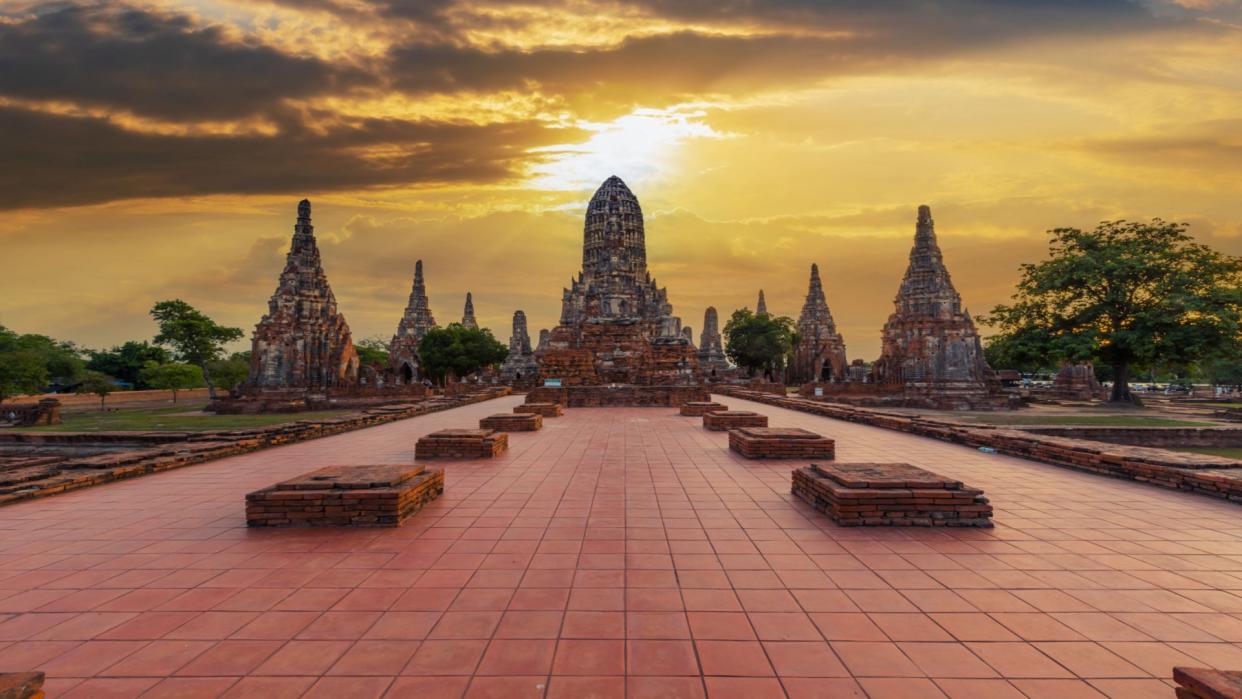
This post may contain affiliate links. If you use these links, we may earn a small commission. Thanks for your support.
Travel 2-3 hours north of modern Bangkok in Central Thailand, and you can time travel. Get lost in cities famed for ancient ruins, memorial sites, WWII traces and soothing nature.
The central region of Thailand was the stronghold of the Ayutthaya Kingdom that lasted over 400 years, paving the way for present-day Thailand. Aside from Ayutthaya's historical park, where the earlier territory comes alive, spirits of the past still haunt the area today – from Lopburi's temples to Kanchanaburi, paying homage to its WWII heritage.
Take these seven trip ideas and dive into the cultural heartland of one of the most underrated regions of Thailand.
Marvel at the ancient ruins of Ayutthaya

Admire Khmer-like and Siamese-style ruins in Ayutthaya. It's a city in the rich central plains of Thailand in the Chao Phraya River basin, where rice paddies, sugar-cane fields and orchards abound.
Before Bangkok was even on a Central Thailand map, Ayutthaya was the capital of Siam, as Thailand was officially called until 1939. Ayutthaya's essence lives on in the Phra Nakhon Si Ayutthaya Historical Park, now a UNESCO World Heritage Site.
The ancient ruins in Central Thailand discovered in 1991 are architectural masterpieces. Unfortunately, the palaces made of wood didn't live to tell the tale when a devastating fire set Ayutthaya ablaze. However, the temples consisting primarily of laterite structures and brickwork enhanced with stucco, stood their ground.
Getting here
Traveling from Bangkok to Ayutthaya takes no more than two hours via train or minibus.
Visit the historic monkey town of Lopburi
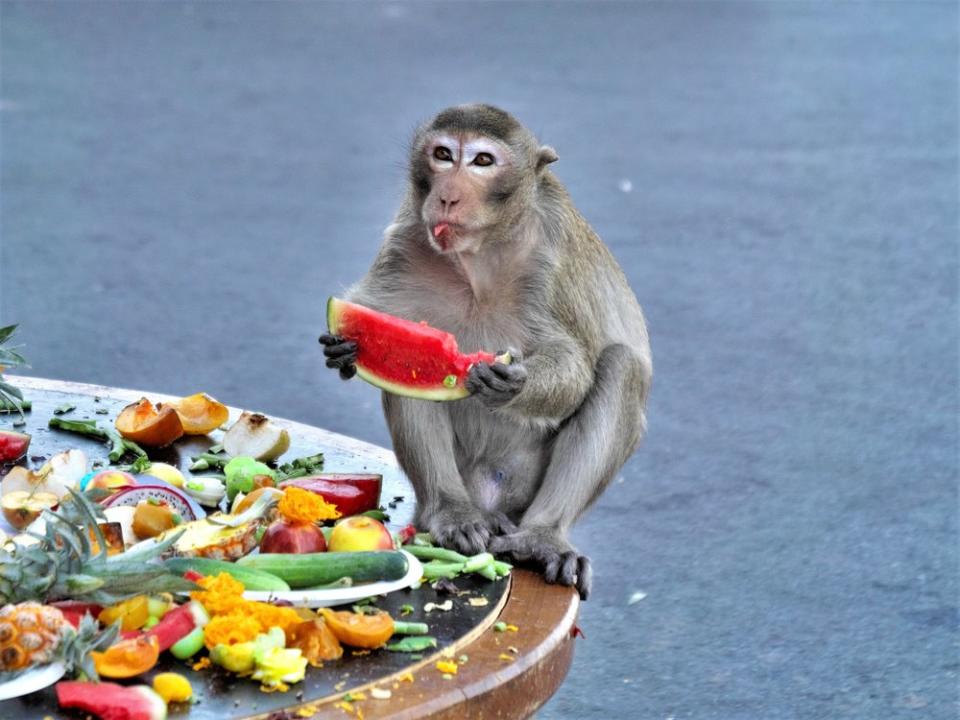
Ever watched monkeys running around a city? Lopburi's mischievous creatures scuttle across phone cables, hang from stupas, and dash around between cars and ruins.
Once a year, on the last Sunday of November, you can join a monkey festival with live performances and dances in their honor. Locals feed them sticky rice, salad, and fruits to thank the monkeys for boosting Thailand tourism in Lopburi beyond any Central Thailand travel guide.
But the appeal of this monkey-mad town isn't just in its picture of greedy macaques on your Thailand itinerary.
Home to Buddhist temples like Wat Phra Si Mahathat and the Angkor-like Phra Prang Sam Yot shrine dating back to Khmer times, Lopburi deserves to be one of the top tourist attractions in Central Thailand. Its ancient Ayutthaya-reminiscent ruins offer an intoxicating window into a bygone era when Lopburi was part of the Khmer empire and the summer capital of the Ayutthaya Kingdom.
Getting here
You can jump on a train at Bangkok's new Bang Sue Grand Station or ride a minibus from Bangkok to Lopburi. The journey should take no more than three hours, and with 15 departures a day from Mochit New Van Terminal (minibus station Chatuchak), you'll be spoiled for choice.
Enjoy a River Kwai dinner cruise on a raft boat or kayak Kanchanaburi's stream
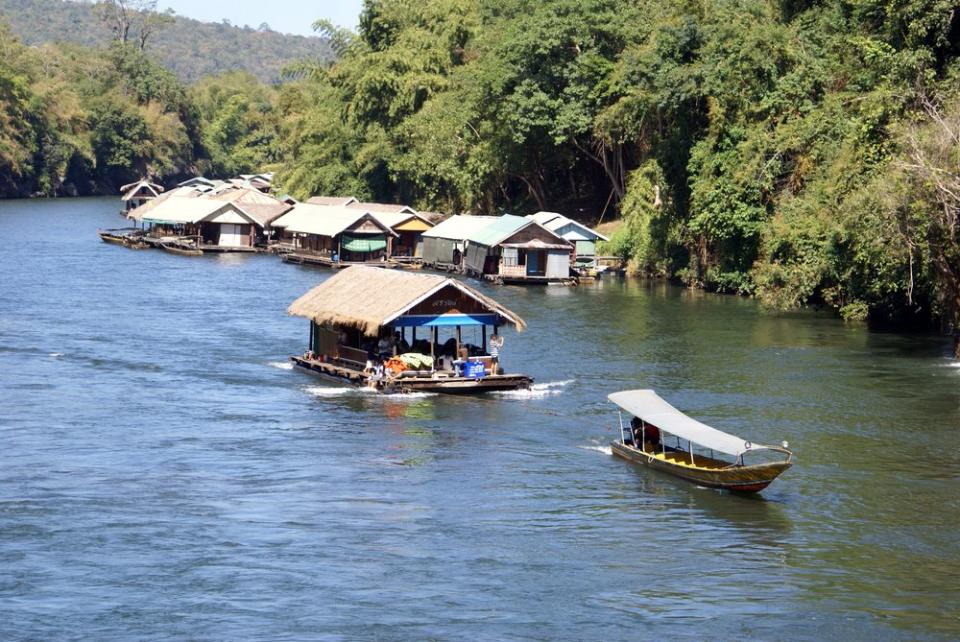
Whether you opt for a private dinner cruise on board a mini-raft or hop on a larger bamboo raft with a karaoke screen and dancefloor, you'll be immersed in Kanchanaburi's nature. As you float downstream on the River Kwai, unwinding after busy days exploring all the things to do in Bangkok, you'll hear exotic birds twittering and playful monkeys piping up from trees.
Other memorable things to do in Central Thailand are kayaking adventures on the River Kwai. Boat tour operators woo travelers with canoeing on waterways along the bat-filled Tham Lawa Cave, gushing waterfalls, and rare birds hiding in the middle of lush vegetation.
Getting here
You can get from Bangkok to Kanchanaburi in three hours for a measly few bucks. Standard minivans run throughout the day.
Swim in the Erawan Waterfall Pools
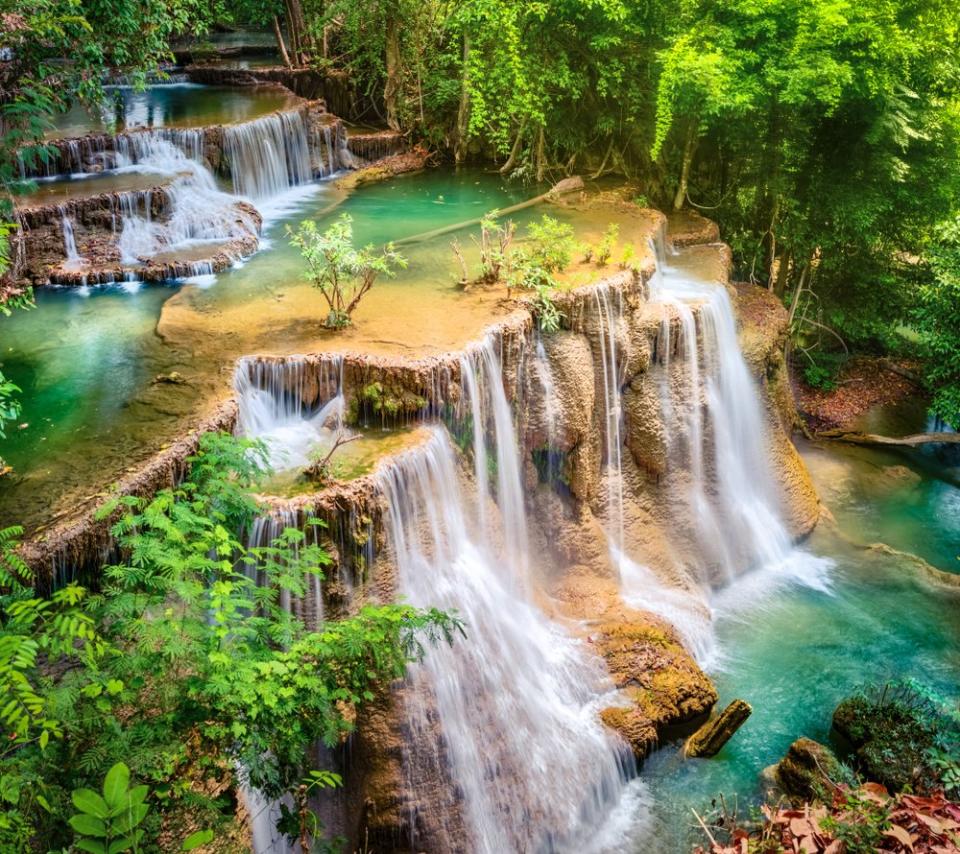
Erawan, one of Thailand's most famous waterfalls, is so popular the authorities had to limit the number of tourists to 500 per day to avoid an all-out scrum. No wonder! Think emerald waters embedded in deciduous woodland, safe swimming areas hugged by shrubs, and seven-tiered falls bathed in sunlight.
Stray away from the center of the activity for an explosion of green on the Erawan nature trail.
Getting here
Erawan National Park is 65 kilometers away from Kanchanaburi along Route 3199. Buses run regularly from Kanchanaburi Bus Station. You can also hail a cab or drive to Erawan falls by car.
Revel in the absence of crowds at Huai Mae Khamin Waterfall

Off the main drag of Erawan's falls, the little-known Hua Mae Khamin Waterfall comes straight out of a fairytale. Snuggled into Srinakarin National Park's greenery rich with oxygen, this otherworldly piece of heaven crashes towards the Khwae Yai River.
You may be looking forward to an invigorating dip in a ravishing plunge basin, but check the updated rules before visiting. Swimming is sometimes banned after heavy rain when water pours violently into the falls, turning the green-tinted pool into a murky pond.
Instead, you can head for the park's caves to feed your adventurous side. But keep your eyes peeled for bats, leopards, and other kitty cats.
Getting here
Hua Mae Khamin Waterfall is situated about 120 kilometers north of Kanchanaburi. The bus or taxi ride from Kanchanaburi takes some 2.5 hours.
Amble around Kanchanaburi
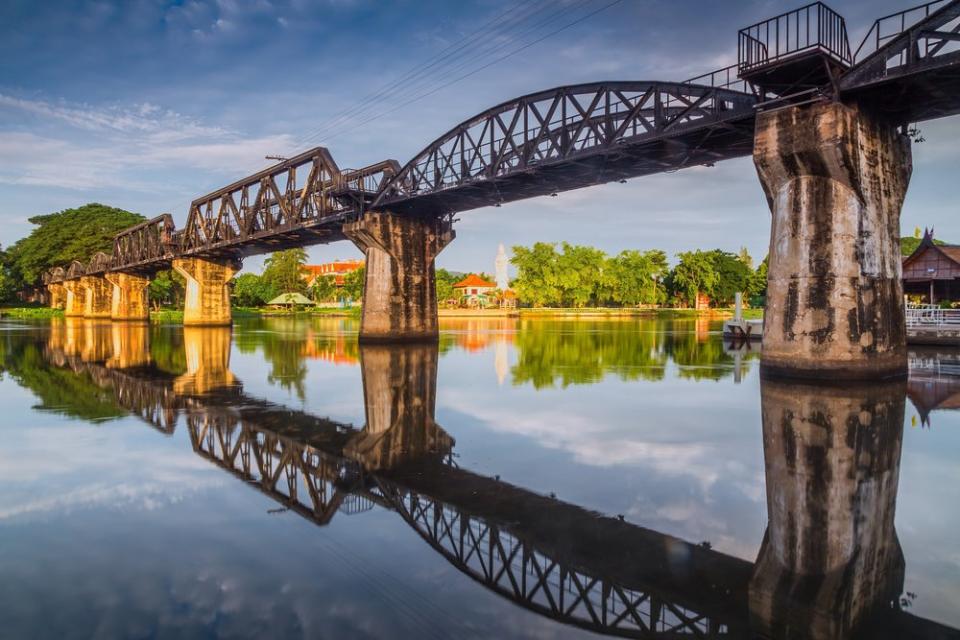
Roaming the streets of Kanchanaburi, you'll witness Thailand's wartime history – from the Death Railway Bridge straddling the River Kwai and the nearby War Museum to the Allied War Cemetery. Walking row upon row of small, perfectly aligned headstones with bronze plaques, you can imagine the gruesome scenes of WWII.
On a lighter note, Kanchanaburi enchants with Chinese-style temples and 100-year-old Chinese merchant buildings. And you can find hedonistic nightlife on top of it all.
Shop at Mae Khlong's Train Market
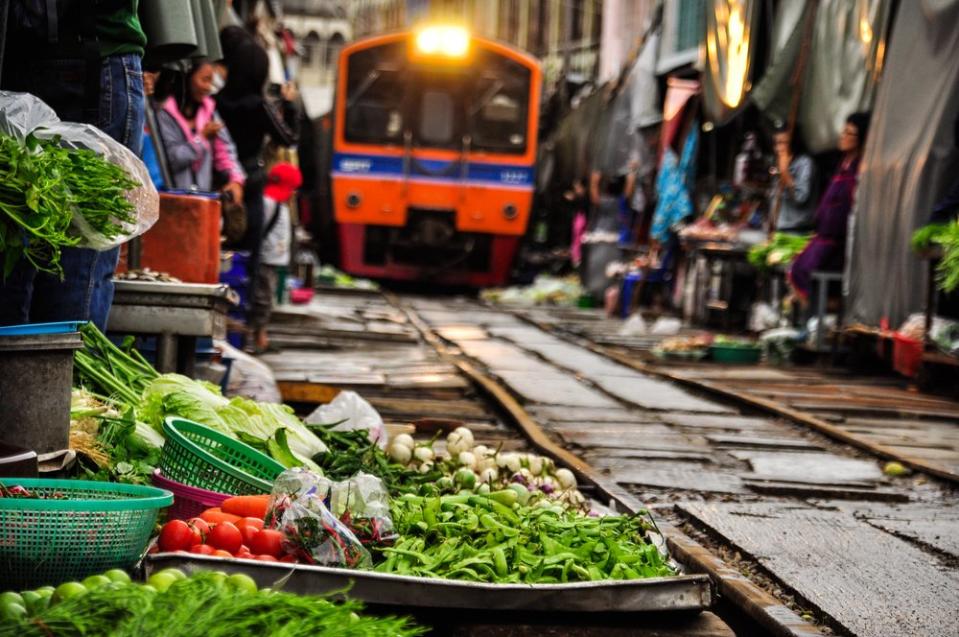
While not strictly off the well-trodden tourist trail, Mae Khlong's 100-meter-long train market in Samut Songkhram Province is popular with globetrotters going to Amphawa, one of the lesser-known floating markets.
The market derives from vendors having to pull in their awnings and goods each time a train travels right through the trading space. But that's what the fun of the railway market is all about.
This fresh market makes for an enchanting stop on your Central Thailand tour, from seafood and exotic fruits, veggies, and dried foods to meats and various knickknacks.
Getting here
Jump on a train at Bangkok's Wongwian Yai station and get on another at Mahachai.
One thing's for sure, with this Central Thailand travel guide at hand, you can make your own memorable history.
FAQ
Is Central Thailand expensive?
Nope. It's one of the most affordable regions of Thailand, particularly Kanchanaburi.
How do you get around in Kanchanaburi?
You can walk, ride a bicycle or scooter, or hail a tuk-tuk or cab.
Is Central Thailand safe?
While you should exercise standard precautions in Bangkok, cities like Kanchanaburi, Lopburi, and Ayutthaya are rather safe.
The post Central Thailand Travel Guide – 7 Splendid Trip Ideas appeared first on Bookaway.